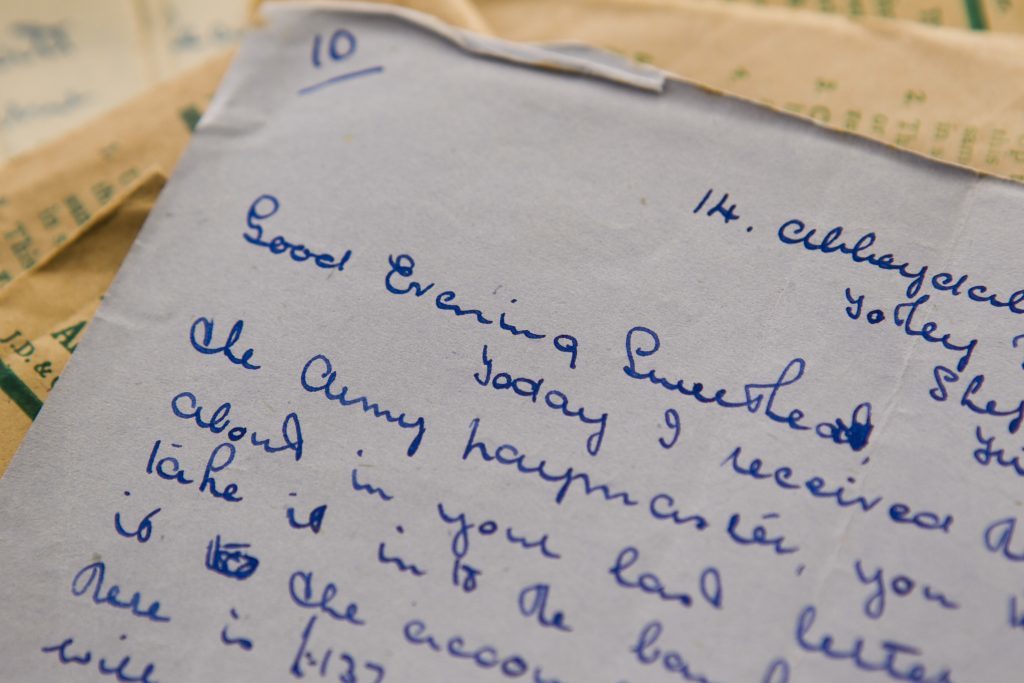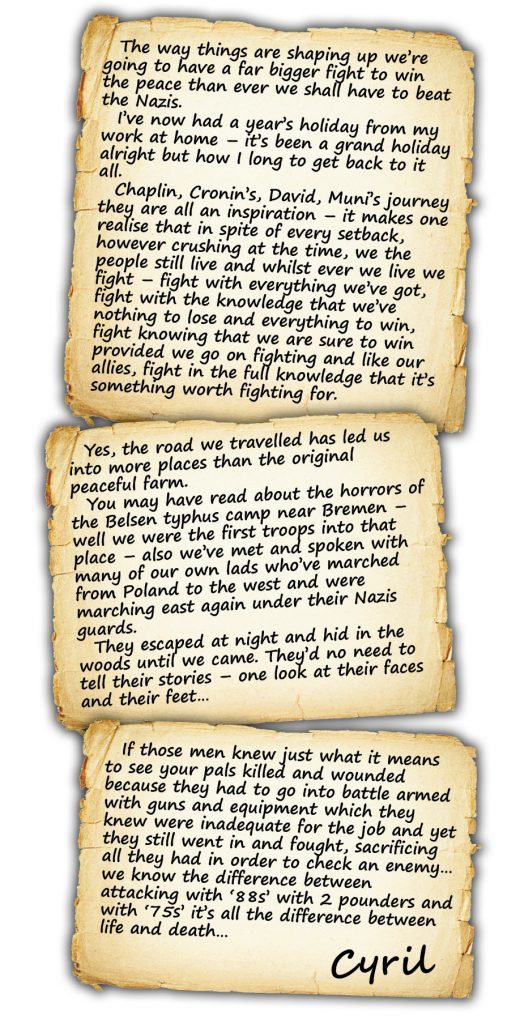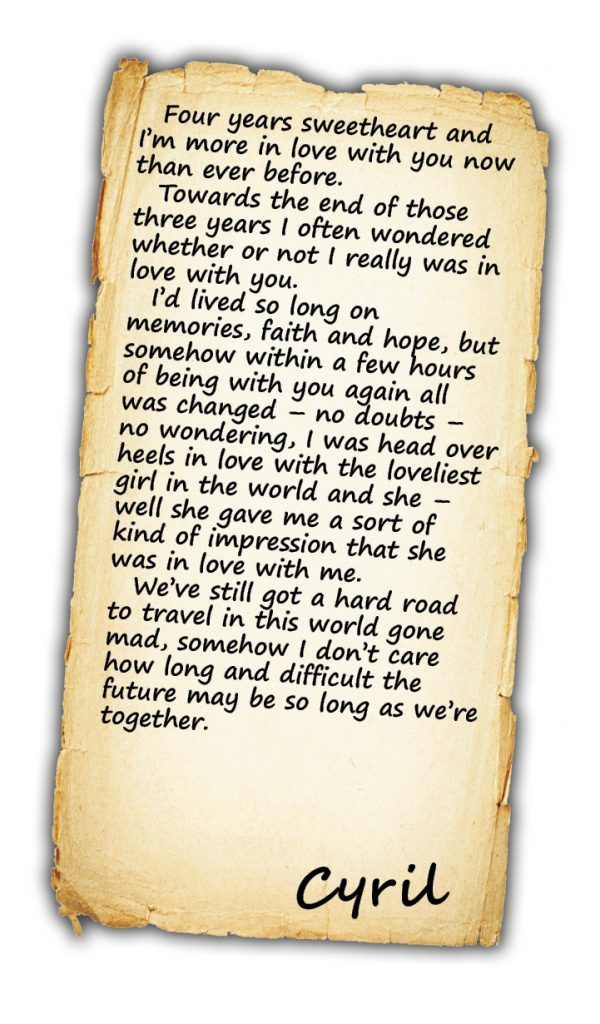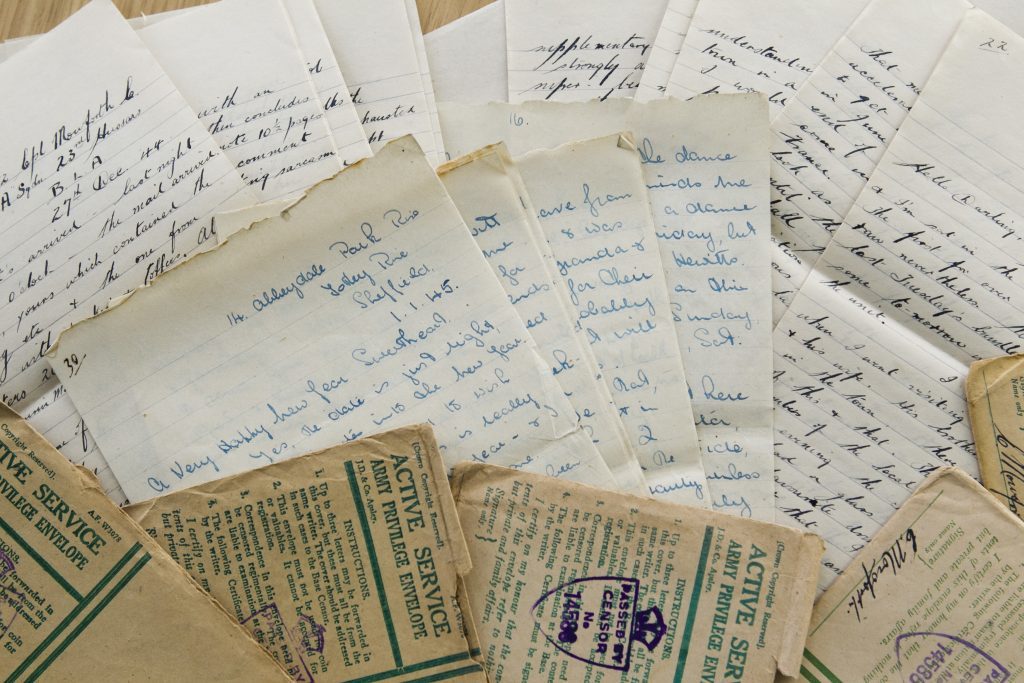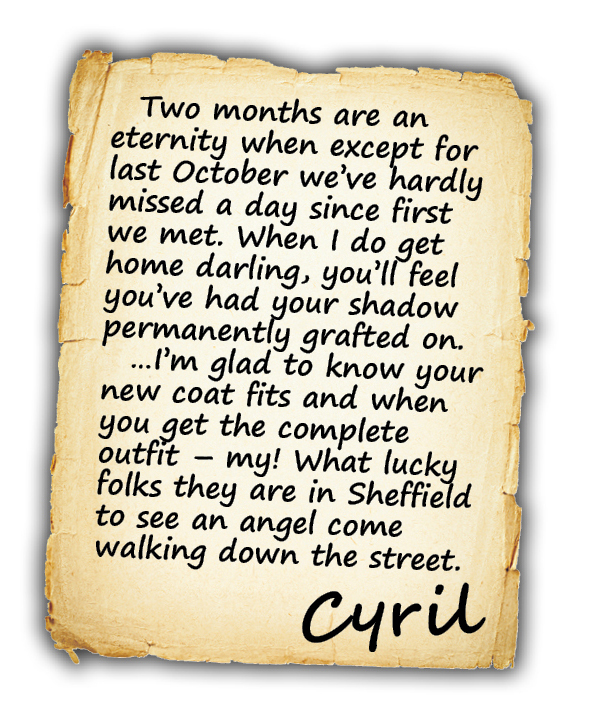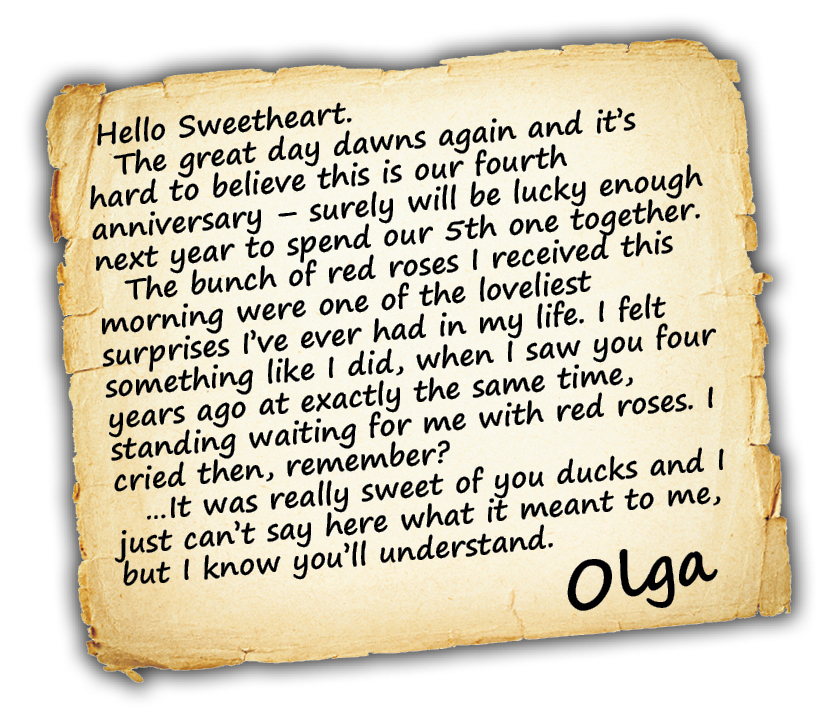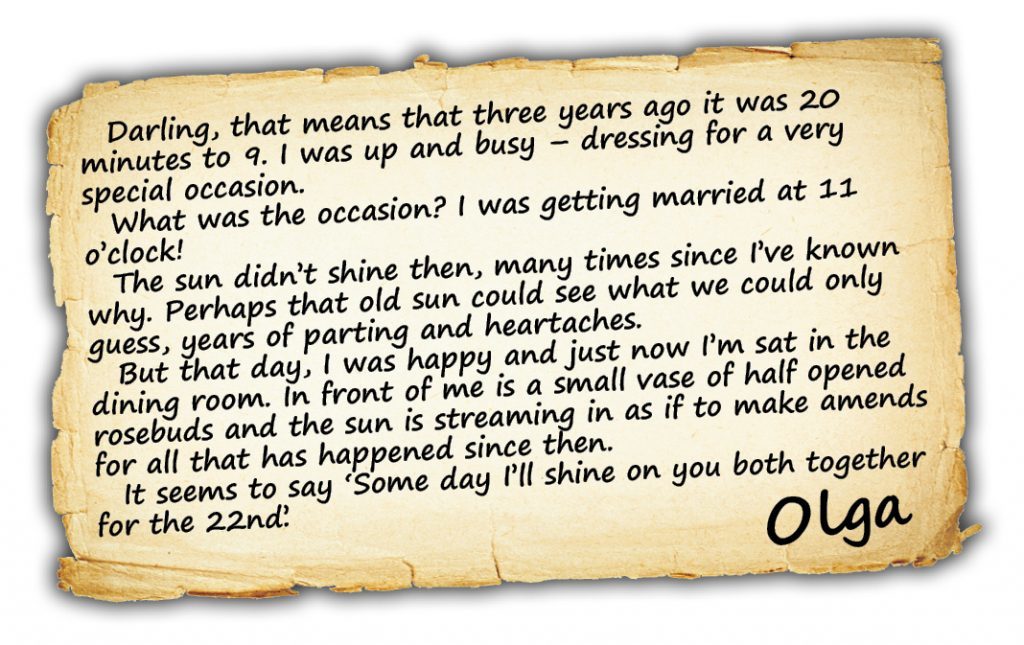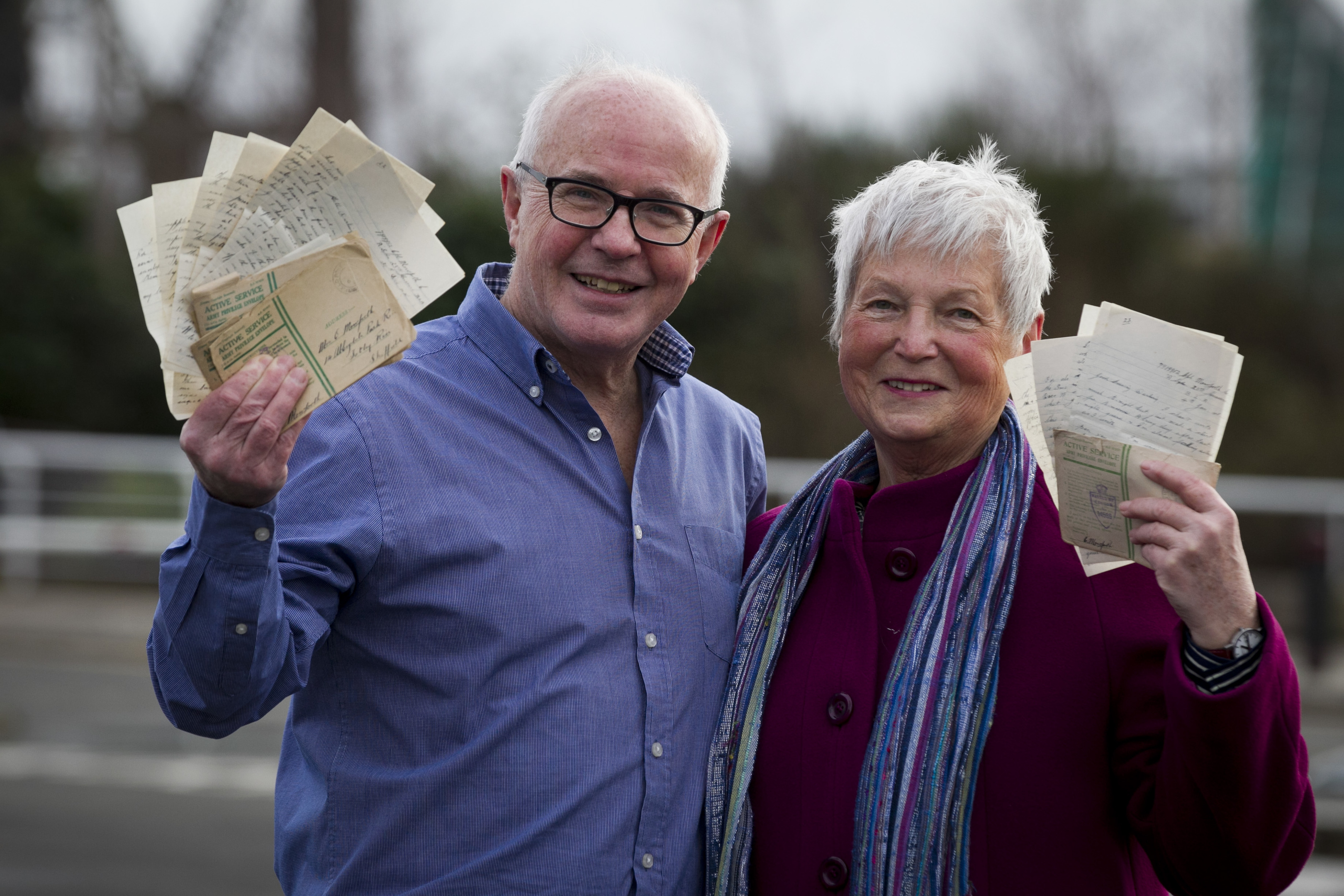
IT was a war that ripped the world apart but Cyril and Olga Mowforth kept their love alive by exchanging letters – more than 1,000 to be precise.
The pair married just weeks before Cyril set off to serve in WWII but wrote to each other almost every day.
Children Peter, Sue and John uncovered the poignant scribbles in their father’s loft – and have opened them up to The Sunday Post in a bid to share a little bit of untapped history with the nation.
“War is something our parents, and probably a lot of people in that generation, almost never really talked about,” Peter said.
“It’s been amazing to learn about our mum and dad, the strength of their relationship – and really, how and why we’ve become the people we are today.”
Peter, who lives in Milngavie, Glasgow, and sister Sue made the amazing discovery when clearing out the attic of the family home a few years ago.
“Sue found the letters tied up with a ribbon in a box after our parents died,” the father-of-two explained. “She didn’t know what to do with them at first. She asked if she should shred or burn them – after all, it was personal stuff between our parents – but we agreed we’d all like to read them.
“The problem, however, was they were all in scrawny handwriting.”
Retired air traffic controller Sue, who lives in Cheshire, decided to do something about it.
She and a neighbour with a penchant for deciphering script spent five painstaking years typing up and organising the letters.
And in 2015, she had them printed into a book, Good Evening Sweetheart, which they distributed to the extended family.
“When all the grandkids heard about the letters they wanted to read them, so it seemed like the most logical thing to do,” Sue, 68, said. “Of course, we never knew our parents during their first six years of marriage but they must both have been hugely influenced by their wartime experience.
“They say what doesn’t kill you makes you stronger. From this experience Cyril and Olga grew into the loving parents we remember, respected and adored.
“Their love for each other and for us was quite special.”
Peter, 63, added: “The book has around 400,000 words – the same as Lord of the Rings!
“Mum wrote twice as much as dad, often not knowing where he was but the letters always found him.
“Their usual greeting to each other was ‘Good Evening Sweetheart’. That’s where the title came from.”
The letters, dated from 1940 to 1946, were exchanged while Cyril was in training at Army barracks in Catterick, and serving as a tank commander with 42nd Royal Tank Regiment at El Alamein in North Africa and in Germany.
All the while, Olga remained at home in Sheffield, assisting with the war effort with civil defence duties.
The couple, who met through their love of youth hostelling in the 1930s and wed in June 1940, share anecdotes about everything from rationing, coupons and transport issues to books and music and, of course, the horror and terror of fighting on the front line. Romantic Cyril even wrote love poems.
In the six years of battle, they only saw each other briefly when Cyril returned home on leave in 1944.
“Dad would send his underpants home to be washed and sewn from northern Europe, and mum would send a few squares of chocolate inbetween dad’s socks that she’d darned. It was very sweet,” e-commerce specialist Peter said.
Sue added: “It’s so evident from these letters that our parents were continually in each other’s thoughts when they were, as Cyril put it, ‘living on the edge of eternity’.
“Nobody knew how long the war would last. They kept saying ‘six more months’ and they’d be back together.”
Lots of Cyril’s letters were censored by the Army.
“There are big holes in them where dad had mentioned where he was and it had been cut out.
“Of course this must have been frustrating for mum as they were double-sided which meant she missed out on big parts of dad’s stories!”
And there are some lovely stories. The couple talk about their dream of coming to Scotland, after Cyril travelled to Glasgow to collect a Comet tank from the Finnieston Crane … now affectionately referred to by Peter’s kids Joss, 23, and Lara, 21, as “Grandad’s Crane”.
But equally some of the letters make for harrowing reading.
“Dad was allocated to the tank division, which is just about the most dangerous job you could do,” Peter said.
“I once asked him if he had ever been blown up and he said quite a few times.
“On one occasion he got blown right out of the top of the tank like a champagne cork. Even though he left out a lot of the details to avoid upsetting or worrying mum, the horror really comes across.
“Dad was one of the first to arrive at the Belsen concentration camp and the first tank over the River Elbe in Germany.
“He lost a lot of comrades. The attrition rate in the tanks was huge.
“In some instances, he was the only soldier in the tank to survive.”
On his return from war, Cyril qualified as a remedial teacher, a role he enjoyed until his retirement. He passed away in 2004, after reaching the fine age of 91.
Olga, who served as an independent community councillor and was instrumental in campaigning for assisted living for the elderly, passed away decades earlier from cancer, aged just 54.
After her death, Olga Mowforth House, a sheltered housing unit, opened in Woodcote, Oxfordshire.
“It’s been interesting to learn about the extraordinariness of their traumatic start to married life,” Peter said.
“Of course, it’s just part of their story.
“Nobody in the family thinks of our parents as heroes.
“But it’s so spectacular because, to them it was ordinary.”
Sue sent the book to the Imperial War Museum and it has been accepted into its collection.
The letters will soon become part of the establishment’s archives.
The interest in their pet project has become so huge that Peter and Sue are considering opening up their parents’ scribbles to the public in a published form.
“History tends to be about kings and queens … there is very little known about the day-to-day life of war,” Peter said.
“And to read it in an exchange between two people in love who shared almost everything certainly gives you a different viewpoint.”
Sue added: “Handwritten letters have become outdated. I can’t remember the last time I received a personal letter, yet not so long ago they were the main means of keeping in touch.
“It’s a skill that must have been tested to its limits during WWII.”
Peter and Sue will read extracts from the letters in a talk at Glasgow’s Hillhead Library on Thursday at 5.30pm.

Enjoy the convenience of having The Sunday Post delivered as a digital ePaper straight to your smartphone, tablet or computer.
Subscribe for only £5.49 a month and enjoy all the benefits of the printed paper as a digital replica.
Subscribe